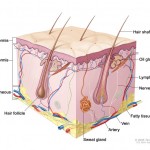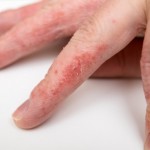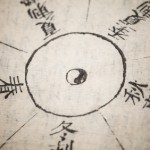Acupuncture and Chinese herbal medicine treat eczema
In the years since World War II, eczema diagnoses have been rising dramatically. It is estimated that 31.6 million Americans have eczema, 1 in 9 will have some form of dermatitis in their lifetime, and 10.7% of all children are affected. In my opinion, this rise is likely due to lifestyle factors, changes in diet and the quality of our food supply, cosmetics and pollution. We live in a very different time than our grandparents, a time of food coloring, CAFOs, and GMO produce. These things set our immune system on high alert, and sometimes an immune system on high alert will attack itself.
Regardless of the causes of eczema, Chinese herbal medicine and acupuncture can treat eczema. Regular treatment with acupuncture and herbal medicine can reduce itchiness, scaling, redness, raised patches and decrease the frequency of flare-ups. For people who experience eczema seasonally, with allergies, or in certain weather, acupuncture can also help. When even traditional Western medications don’t seem to be working, this medicine will.
I have a particular interest in dermatology, and have undertaken extra study in addition to the thousands of hours of study as a general practitioner I completed for my Master’s degree. Acupuncture alone can treat eczema, but I strongly prefer to incorporate herbal medicine and dietary therapy into the treatment plan. Using herbal medicine and dietary therapy will allow us to achieve lasting results and reduction of symptoms more quickly. If you choose to use only acupuncture, a reduction in itchiness, redness, and other symptoms will take longer to achieve, but efficacy is still high.
What is the difference between eczema and dermatitis?
Eczema is skin disorder that falls under the umbrella of dermatitis. Eczema causes inflammation, irritation and itchiness. The most common kind of eczema, also known as atopic dermatitis, refers to the skin condition coinciding with other allergic conditions, like asthma, food sensitivities, and hay fever. There are other forms of eczema besides atop dermatitis. These are described below.
What are the different kinds of dermatitis?
In most cases of dermatitis, rashes appear in the crooks of the elbows and knees, neck, hands and feet. Changes in skin color, inflammation, blisters (sometimes oozing, then crusting over), inflammation and thickening (also known as lichenification) can occur. Below is a list of types of dermatitis and their specific symptoms.
Atopic Dermatitis (Eczema)
Atopic dermatitis is caused by a hypersensitivity reaction in the skin. This is kind of like an allergy, but dermatitis is not caused by allergies. The result is inflammation and redness, sometimes with itching. Atopic dermatitis is most common in infants younger, some of which outgrow eczema as they enter adulthood. It is very common for people with atopic dermatitis to also have asthma or seasonal allergies, a family history of asthma, allergies or eczema, or food sensitivities/intolerances. Atopic dermatitis is not caused by allergies, but there is a connection between the two. We often see in the clinic that dermatitis gets worse when exposed to the substances to which they are allergic.
Seborrheic Dermatitis
Seborrheic dermatitis, also known as dandruff, seborrheic eczema or cradle cap (in infants), is a very common condition in which the skin becomes inflamed, flaky and oily. White or yellowish scales are often present. Redness of the skin is not always present. This is most often observed in areas of the skin that are naturally oily, like the scalp or ear. Other commonly affected areas are the eyebrows, eyelids, creases of the nose, lips, behind the ears, and middle of the chest.
Pompholyx Eczema and Dyshidrotic Eczema
Pompholyx eczema is also known as dyshidrotic or vesicular eczema. It is so named because vesicles (blisters) form on the skin of people with this kind of eczema. The hands are the most commonly affected site, and in this case is called cheiropompholyx. The feet may also be affected.
The first (acute) stage shows tiny blisters (vesicles) deep in the skin of the palms, fingers, instep or toes. The blisters are often intenesly itchy or have a burning feeling. The condition may be mild with only a little peeling, or very severe with big blisters and cracks which prevent work. There are multiple stages of pompholyx eczema:
- During the acute stage, we see tiny blisters known as vesicles appear deep in the skin of the palms, fingers, sole of the foot or toes. The vesicles are very itchy and are accompanied by an intense burning feeling. There may be some peeling and cracking of the skin, which prevents normal movement of the hands.
- During the chronic stage, there is more peeling, cracking of the skin and crusting of the blisters. After the skin affected by the initial flare-up heals, another break out may occur. Different sites may be in different stages of blistering.
Severe case of pompholyx eczema often show changes around the nail, and may cause nail dystrophy. This results in ridges and chronic paronychia (nail fold swelling).
Nummular Eczema
Nummular eczema, like atopic dermatitis, is related to allergies and allergic conditions. In nummular eczema, coin-shaped spots or patches appear on the skin. The most commonly affected areas are the arms and legs, though spots and patches may spread to the middle of the body. Spots and patches may ooze and crust over. Itching and redness are very common.
Contact Dermatitis
Contact dermatitis is a result of the skin coming in contact with either an irritant or an allergen, which causes redness and sore, inflamed, weeping/oozing rashes. Allergic contact dermatitis often presents as red, streaky, or patchy rashes, which are often delayed 24 to 48 hours after exposure. Irritant contact dermatitis typically presents as rashes which are dry, red, and rough
Lichen Simplex Chronicus
Lichen simplex chronicus (LSC) is a skin condition characterized by thickening of the skin with scaling (flaking). This is caused by repetitive scratching or rubbing of the affected area. Lichen simplex chronicus is what is called a “secondary process” because it comes after the scratching instead of causing the itching and scratching. The mechanical trauma caused by chronic scratching causes lichenification.
What causes eczema?
From a Chinese medicine perspective, there are a number of causes of eczema. Illness arises as a result of some kind of imbalance in the body. The main causes of these imbalances are stress, improper diet, toxin buildup, and other lifestyle and emotional factors. From a modern perspective, we also have to consider hormone imbalances and infection.
From a Western biomedical perspective, the cause of eczema is unknown. What scientists believe is happening is the immune system reacts to an irritant, allergen or other offending substance, or even a phantom substance. Once the immune system is activated, it fails to shut off when the substance is removed. The immune system then acts on the body itself, in this case the skin.
Regardless of the cause, I use acupuncture and Chinese herbal medicine to restore the natural balance of the body. My treatments include long-term planning so that you can maintain your symptom relief through diet and lifestyle after you stop seeing me regularly. Most people continue to come for tune-ups now and again because they feel so great after acupuncture treatments. I encourage seasonal (quarterly visits) and during particularly stressful times as most people have flare-ups during these periods.
How does acupuncture and Chinese herbal medicine treat Eczema?
As I mentioned above, acupuncture and Chinese herbal medicine work by restoring the natural balance of the body. We do this by reducing what is in excess and building up what is deficient. Part of this, from a very modern perspective, is settling down the overactive immune system causing dermatitis. Acupuncture and herbal medicine also help cool red, inflamed skin and stop itching. Using topical herbal medicine soaks can strongly stop itch, helping support acupuncture treatments between visits.
When a patient comes in for treatment of a skin condition, I tell them to expect to need 3 to 6 months of regular treatment with acupuncture and herbal medicine. Without herbal medicine, treatment to resolve redness, itching and flaking will take longer. If a patient is unwilling to change his or her diet, a complete resolution in eczema symptoms is unlikely. After eczema symptoms are resolved, I continue treatments for an additional 4 weeks or so to consolidate the treatments. This helps to ensure symptoms won’t recur.
To make an appointment with for treatment, please go to the Appointments page. If you have further questions, feel free to ask through the Contact page.



